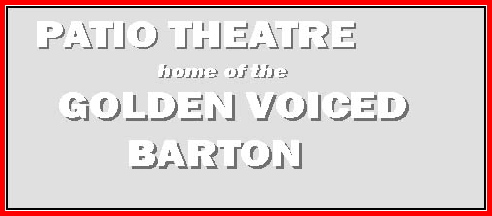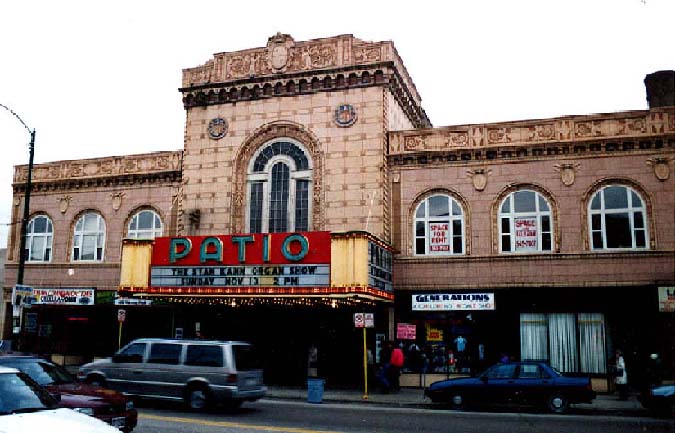

6008 W. Irving Park Rd Chicago
The building opened in 1927 with 7 stores, 14 apartments and a state of the art
neighborhood movie house. The building continues today with its' original marquee
and steam boiler and stands as a landmark to a bygone era. The movie house still
operates 7 days a week as the largest single screen theatre in the City of Chicago
with 1500 seats. It is an atmospheric house and the patrons can enjoy the show as the
stars twinkle and the clouds roll.
The theatre still can function as a performance house as all the stage panel dimmers
and switches are fully functional providing the lighting changes that were possible in
the older theatres. A powerful 4000 watt spotlight obtained from the Chicago Stadium
floods the organ and stage to enhance the performances.
THE BARTON ORGAN
| Patio Theatre Barton Pipe Organ | ||
| The
3 manul 18 rank Barton organ was installed as a 3/17 at a cost of $25.000
in time for the theatres opening in 1927. The first staff organist was
John Devine. Like most theatre pipe organs, the instrument fell silent
after the talking pictures eliminated the need for live accompaniment of
the films.
Restoration began in 1966 when a group of organ enthusiasts brought the organ back to playing condition. CATOE members have kept this instrument alive and available for public performances through the years and the organ is still heard today. The first public show was presented on April 6, 1967 featuring a silent movie and sing-a-long with popular theatre organist Hal Pearl. The audience packed the theatre with standing room only remaining. Much organ repair continued through the years by dedicated CATOE members. The organ speaks from two chambers. The organ is essentially intact with all the original components including pipework, relay and 10 HP blower. There have been some additions to the organ as indicated below:
16' TUBA octave added to the main chamber
l
|
||||||||||||||||||||||